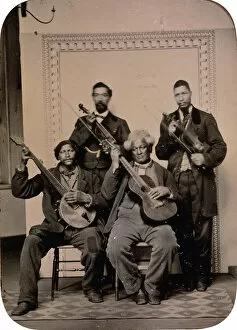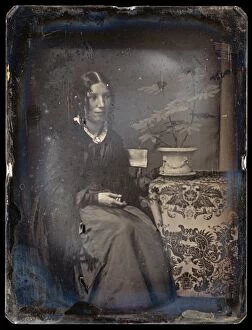Quarter Plate Collection
"Capturing Moments: A Glimpse into the Past through Quarter Plate Photography" Step back in time with these captivating quarter-plate photographs
For sale as Licensed Images
Choose your image, Select your licence and Download the media
"Capturing Moments: A Glimpse into the Past through Quarter Plate Photography" Step back in time with these captivating quarter-plate photographs, each one a window into a different era. The Freemen of Colour, c. 1850, proudly display their heritage in this hand-coloured daguerreotype, housed in a delicate leather case. Witness the resilience and strength of these individuals who defied societal norms. In another frame, we find ourselves amidst celebration as we witness the Fireman and Bride from c. 1860. This tintype photograph is brought to life with meticulous hand-colouring and gilt highlights, immortalizing their joyous union for generations to come. The enigmatic Christopher Kit Carson (1809-1868) graces us with his presence in an 1840s daguerreotype portrait. His piercing gaze reveals tales of adventure and exploration that defined his legendary life as an American frontiersman. Moving forward to 1865, we encounter a quartet frozen in time on a quarter-plate tintype within its elegant leather case. Their harmonious melodies resonate through the ages, reminding us of the power of music to unite souls across generations. Delve deeper into domestic scenes from the mid-19th century as we meet "The Music Teacher and His Wife, " captured by an unidentified photographer during the 1850s. Their shared passion for music radiates from this intimate portrait. Children take center stage in several intriguing compositions - Two Children with Toys (c. 1855), Child with Drum (1850s), Child Standing on a Chair Holding Flowers (with Mother), all photographed by unidentified artists who skillfully capture innocence and playfulness frozen forever on quarter plates. However, not all moments are filled with joy; some reveal profound sorrow etched onto our collective memory like no other medium can achieve. In haunting stillness lies "Dead Child On a Sofa" (c.














